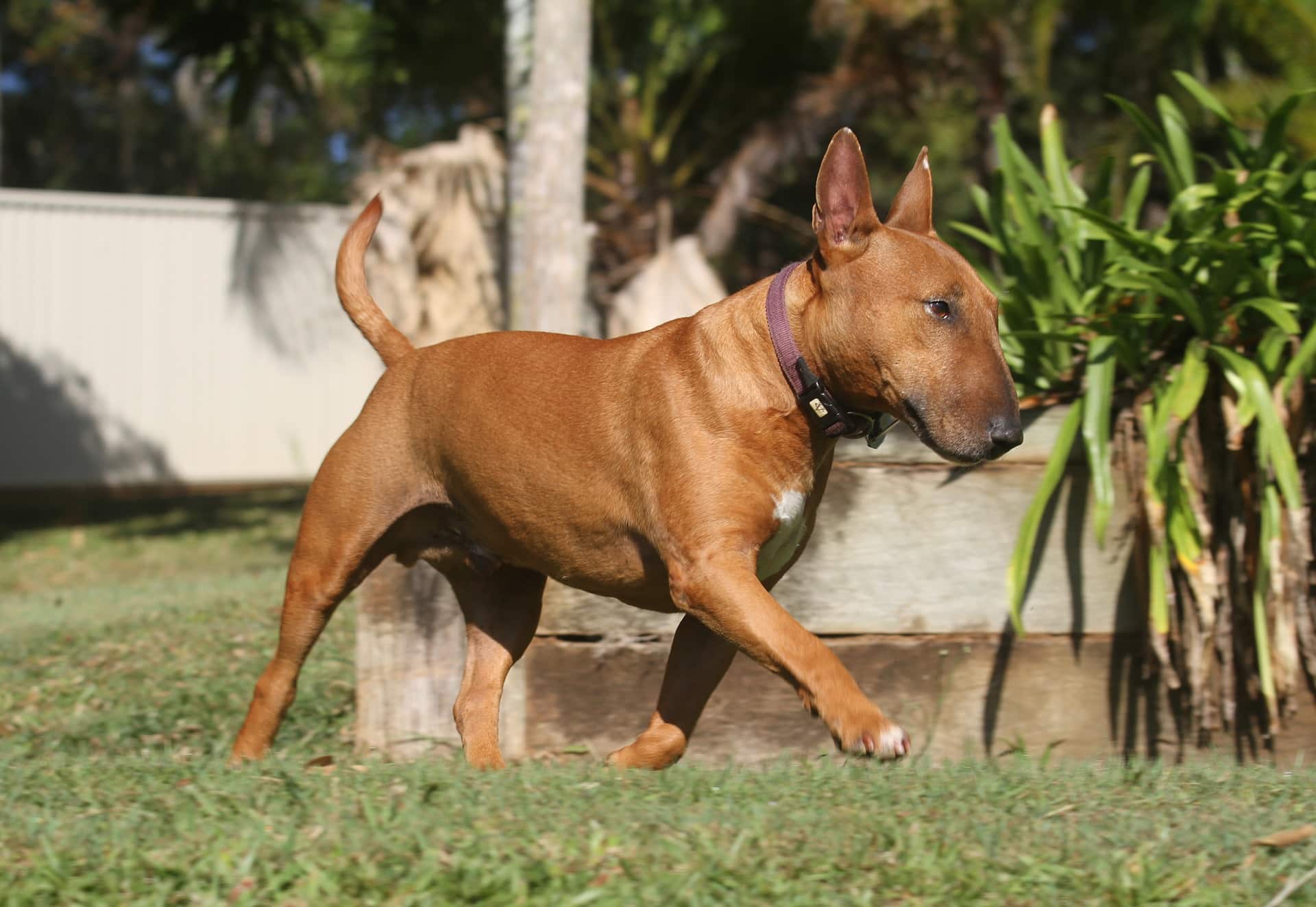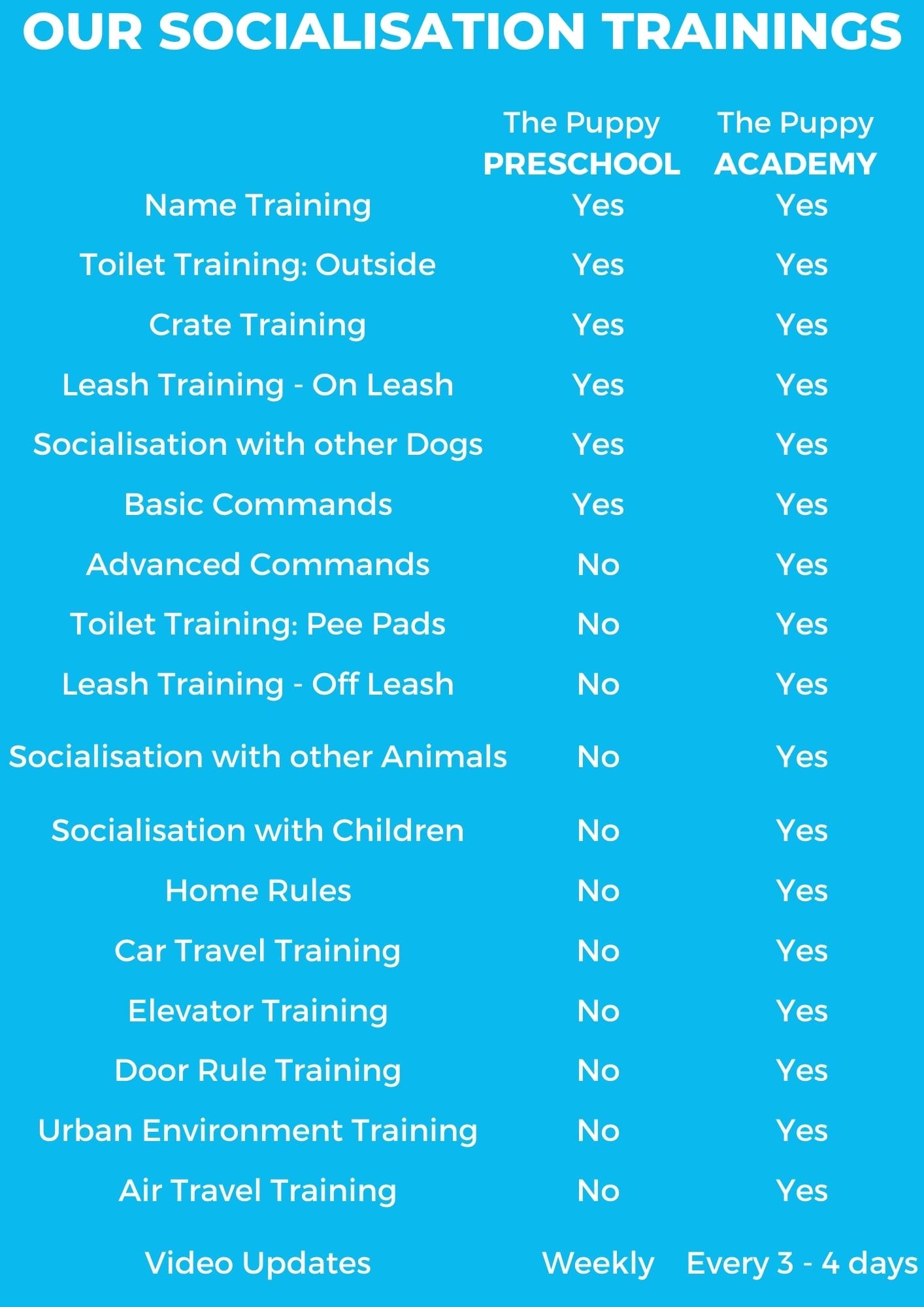
Bull Terrier
Easily recognised by its characteristic well rounded body, the Bull Terrier is built like a boulder. Often lauded for having the highest body muscle density of all the dog breeds, the bull terrier is colloquially known as the strongman of the dog world.
Although this breed does not shy away from some rough and tumble, this dog is better known for its fun-loving, goofy and hyperactive personality that is balanced by the loyalty, politeness and obedience it radiates when needed.
These dogs can live in an apartment if they are adequately exercised, but they do best in a spacious house with a decently sized garden where they can roam around and get into all kinds of shenanigans.
Bull Terrier breed attributes
About Bull Terrier breed
Description
Easily recognised by its characteristic well rounded body, the Bull Terrier is built like a boulder. Often lauded for having the highest body muscle density of all the dog breeds, the bull terrier is colloquially knowns the strongman of the dog world. The Bull Terrier has a short, strong, stable back with a thick muscular neck. The tail is low set and thick at its base while tapered to a point at the end. The legs must be parallel and equal in length to the depth of the dog’s chest. You might feel that this gives this breed a stubby look and this might tempt you to try your chances at outrunning these dogs, but appearances are deceiving and the Bull Terrier is highly athletic with well-knit muscles, capable of covering a lot of ground with its strides. The skin on these animals is tight fitting with no excessive folds.
Although the Bull Terrier’s characteristic barrel shaped body can be recognised from a mile away, perhaps the most distinguishing feature of the dog is its head. The head is egg shaped and slopes from the top of to the tip of its nose in a smooth curve, giving the dog a distinguished, Roman nose shaped head. The eyes are small, triangular and almond shaped, and give the dog its characteristic intelligent expression. The colour of the dog’s eyes should not be blue, and the nose should always be black with well-formed nostrils. Its small ears should stand erect and held upwards when focused and attentive. The eyes should also be positioned further away from the nose than from the top of the head. The jaws of the dog should be well structured with a well formed lower mandible. The occlusion of the dog’s teeth should result in a clean scissor bite.
Origin: Great Britain.
Look
The Bull Terrier sports a short coat with flat, evenly distributed, shiny hair that feels slightly coarse to the touch. Some dogs also grow a soft, short undercoat during the colder winter periods. They are a dream to groom, requiring relatively little maintenance. The colour of the coat can be pure white or coloured. Pure white individuals are allowed to have patches or skin markings on their head, but the coat should not be peppered. Coloured individuals with a brindled coat are highly coveted. Black brindle, red, fawn and tricolour are also acceptable.
Bull terriers are medium shedders, often only needing to be regularly brushed down with a rubber horse brush to bring their shedding to manageable levels.
Health
The Bull Terrier is generally considered to be a healthy and hardy breed. However, there are some breed associated diseases that you should be aware of. These are:
- Skin allergies and conditions.
- Compulsive behaviour.
- Kidney failure.
- Particularly in white dogs.
- Patellar luxation.
- Cardiac disease.
At Newdoggy.com we promote puppies coming from reputable breeders, who use genetic testing and good breeding practices to remove genetic conditions from their breeding lines. Newdoggy.com’s Health Guarantee certifies that all promoted puppies are in good health.
Learning
It is recommended that you start socialising your Bull Terrier puppy as early as possible. Bull Terrier puppies greatly benefit from socialisation with other people and dogs, and this helps them develop a well-balanced, easy temperament that makes them a pleasure to be around. Housebreaking and training of basic commands can start early. It is best not to expect your Bull Terrier puppy to learn things immediately, since while Bull Terriers are very intelligent dogs they are also very inquisitive and can be easily distracted by something they deem more interesting. Holding onto your pup’s attention by using treats and praise is highly recommended. Serious obedience training should be not be started earlier than when the pup is 6 months of age; they might not look it, but these are sensitive dogs and do not respond well to being punished and scolded harshly. It is best to handle a Bull Terrier with a firm, compassionate hand in order to allow the dog to build a trusting relationship with you as its owner. It is imperative that the dog never be punished on its return after it has been called. Being so inquisitive and high energy makes these dogs a challenge to train, we therefore do not feel they are suitable for novice dog owners.
Temperament
This breed of dog was well established as a pit fighting dog. The breed excelled in the blood sport of ratting, but the modern version of the breed is a far cry from the gamier version of its ancestral past and has long since distanced itself from this gruesome and barbaric sport. Despite the breed having been bred to favour a calmer demeanour, it is still not suggested for this breed to be housed with small or rodent-like pets such as rabbits, pet rats and guinea pigs. On the upside, this breed will keep your house free of any vermin. One must also take extra care when socialising certain unneutered male Bull Terriers with other male dogs, as play-fighting might escalate into something more serious. Having said that, this is usually a good natured, playful breed that is well known for its clownish personality.
Although this breed is not meant to be a man stopper, it radiates an aura of courage and fearlessness that makes ill-intentioned people think twice before messing with you. It is not unheard of for this breed to defend its family or owner should such a situation arise, and it is regarded as a relatively good guard dog.
Although this breed does not shy away from some rough and tumble, this dog is better known for its fun-loving, goofy and hyperactive personality that is balanced by the loyalty, politeness and obedience it radiates when needed. It is easier to reach this balance if the dog is given enough time to waste its energy through proper exercise. This breed of dog also thrives on the attention of both adults and children. However, it is recommended that children should not be left unsupervised with these dogs. This is not suggested because this breed is prone to attack children, but because its rambunctious nature can lead to the dog to becoming overly excited, which may result in young children being knocked over and suffering indirectly delivered injuries. It is also recommended that should the dog be left at home alone, one should provide it with some means of entertaining itself in order to avoid destructive behaviour.
Living with
These dogs can live in an apartment if they are adequately exercised, but they do best in a spacious house with a decently sized garden where they can roam around and get into all kinds of shenanigans.
Find Bull Terrier Puppies for Sale
New litter alert
Please fill in the below form and we will let you know when a new Bull Terrier litter arrives.















